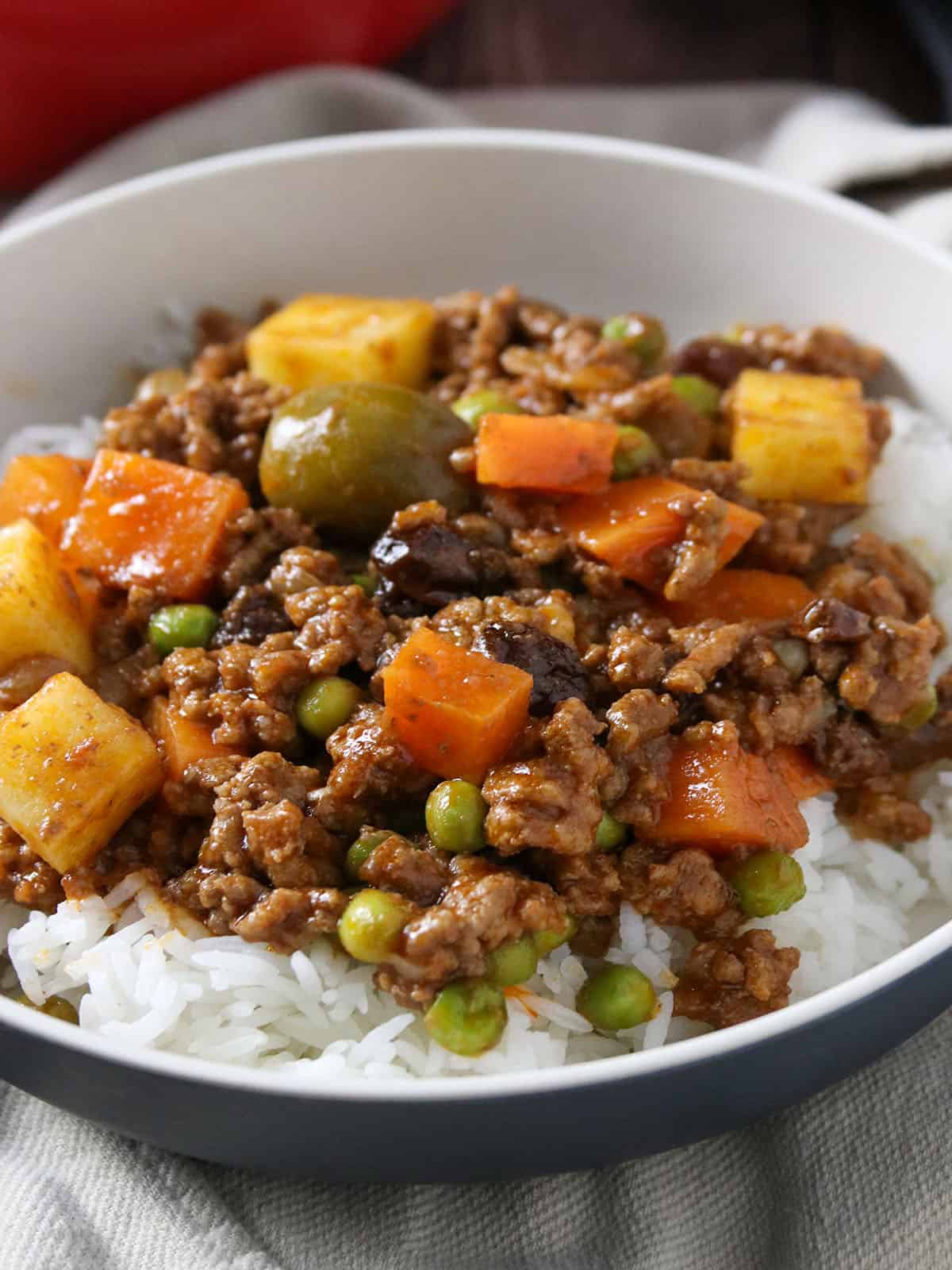Explore the Rich Preference of Filipino Cuisine With These Must-Try Recipes
Filipino food uses an impressive tapestry of flavors that reflect the country's abundant cultural heritage. Each recipe narrates, from the tasty depth of Adobo to the refreshing flavor of Sinigang, welcoming cooking lovers to discover a varied variety of tastes. The festive attraction of Lechon and the soothing warmth of Kare-Kare even more enrich this gastronomic trip, while the vivid Halo-Halo gives a pleasant final thought to any dish. As we think about the nuances of these iconic dishes, one need to consider how they not just please the taste buds however additionally connect us to a more comprehensive cultural narrative.
Adobo: The Famous Recipe
Adobo has emerged as the ultimate dish of Filipino food, exciting tastes both locally and abroad. This beloved meal is defined by its special mix of full-flavored, sour, and a little pleasant tastes, attained via a thorough marination procedure. Commonly, adobo is prepared making use of chicken or pork, although variations exist that incorporate seafood and veggies.
The essential ingredients of adobo include soy sauce, vinegar, garlic, bay leaves, and black pepper, which together develop an abundant and fragrant sauce. The food preparation approach usually includes simmering the meat in the marinate, permitting it to take in the facility flavors while softening. This process not only boosts the preference however additionally functions as a natural chemical, making adobo an excellent meal for storage.
Adobo is usually served with steamed rice, which matches its robust flavor account. Each region in the Philippines boasts its own version, showing local components and culinary customs. This adaptability talks with the dish's social relevance and withstanding popularity. Whether appreciated in your home or in restaurants, adobo stays a staple that embodies the essence of Filipino hospitality, making it a must-try for any person exploring this dynamic cuisine.
:max_bytes(150000):strip_icc()/Beef-Stir-Fry-with-Snow-Peas-2000-eaa56c8a960f447c816c9de642a21c70.jpg)
Sinigang: A Tangy Delight
An additional cornerstone of Filipino food is sinigang, a recipe commemorated for its distinct appetizing flavor. This full-flavored soup is generally made with a variety of meats, including pork, beef, shrimp, or fish, and is defined by its sour broth, which generally stems from tamarind, green mango, or calamansi. The equilibrium of acidity and umami develops a rejuvenating contrast that is both calming and invigorating.
Sinigang is often enriched with a variety of fresh veggies such as radish, eggplant, water spinach, and string beans, adding not just to the recipe's flavor account but also to its dietary worth - Filipino food recipes. Each family may have its very own variation, with local variations that show local ingredients and cultural impacts
The preparation of sinigang entails simmering the picked meat till tender, adhered to by the enhancement of the souring agent and veggies. This technique enables the tastes to blend beautifully, leading to a hearty and rewarding meal. Typically offered with fit to be tied rice, sinigang personifies the significance of Filipino friendliness and is a beloved staple, typically delighted in during click family events and special events.
Lechon: The Festive Roast
Lechon, frequently pertained to as the centerpiece of cheery Filipino parties, is click over here a succulent baked pig understood for its crunchy skin and tender, flavorful meat. This famous dish is deeply rooted in Filipino culture, typically gracing tables during birthdays, wedding events, and considerable vacations. The prep work of lechon is an art form, needing careful focus to information, from marinading the pig with a blend of seasonings to guaranteeing an even roast over an open fire or in a specialized oven.
Generally, the pig is skilled with a mixture of salt, pepper, and local herbs, passing on a rich flavor that enhances its all-natural juiciness. The cooking process can take numerous hours, throughout which the skin transforms right into a completely crispy layer, developing a delightful contrast to the succulent meat underneath.
Lechon is generally offered with a side of liver sauce or vinegar dip, improving its savory account. It is not just a meal however a public experience, as friends and families collect around to appreciate this delicious recipe. The aroma of lechon floating with the air is an invitation to delight, making it a beloved sign of party in Filipino society.
Kare-Kare: Oxtail Stew
Kare-Kare, a rich and passionate oxtail stew, holds an unique location in Filipino cooking custom, commemorated for its unique taste account and vivid discussion (Filipino food recipes). This recipe is defined by its lush peanut sauce, which is produced by grinding roasted peanuts or utilizing peanut butter, offering it a creamy and nutty essence. Typically, kare-kare features tender oxtail, although variants might consist of tripe or beef shank, each contributing to the stew's depth of taste
The prep work of kare-kare usually entails slow-cooking the meat until it becomes incredibly tender. The addition of a variety of vegetables, such as eggplant, string beans, and banana hearts, not just boosts the stew's dietary worth yet also its aesthetic appeal. Served with a More Info side of bagoong, or fermented shrimp paste, kare-kare perfectly stabilizes its abundant, tasty notes with a salty kick.
Often delighted in during special occasions and family members celebrations, kare-kare embodies the essence of common eating in Filipino society. Its fascinating intricacy and comforting heat make it a meal that is not only satisfying to the taste buds but additionally stimulates a feeling of fond memories for lots of Filipinos around the globe.

Halo-Halo: A Sugary Food Treat
Halo-halo is commonly considered as the perfect Filipino dessert, commemorated for its dynamic mix of structures and tastes - Filipino food recipes. This wonderful mixture is an ideal depiction of the Philippines' abundant cooking heritage, combining different active ingredients that come together to create a rejuvenating and indulgent reward, especially during warm climate
At its core, halo-halo functions smashed ice topped with a variety of active ingredients, consisting of sweetened beans, jellies, fruits like bananas and jackfruit, and luscious leche flan. A generous scoop of ube (purple yam) ice lotion crowns the combination, including a rich, luscious taste that elevates the dessert. The layering of ingredients not just develops a feast for the eyes however likewise offers an intricate interplay of sweetness and texture in every dose.
Generally served in a glass, halo-halo encourages restaurants to blend the materials prior to relishing. This communal element improves the treat's charm, as each person's version can be distinctively customized. Whether appreciated as a road food extravagance or an unique event reward, halo-halo continues to be a beloved symbol of Filipino culture, inviting every person to explore its delightful and varied tastes.
Verdict
